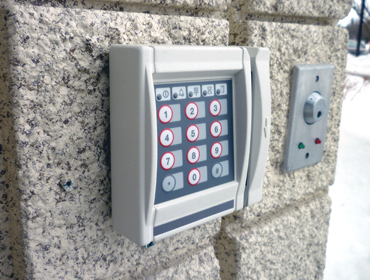Intrusion Alarm Systems

Intrusion alarm systems have come a long way from the days of brick-sized motion sensors and keypads. Today's detection devices are much more discreet, yet robust, and "intelligent" devices offer greater immunity to false alarms.
Control panels are more flexible in terms of size, programming, and expandability. Keypads are more aesthetically pleasing and easier to use. In terms of functionality, most intrusion alarm systems can now be interfaced with lighting systems and video surveillance systems, so an intrusion event can trigger lights and/or a camera action. Remote access, via a smartphone or desktop computer, can enable the user to interact with the building security system. Scheduled events can turn the system on or off at pre-determined times.
Use of data networks or cellular networks eliminates the need for dedicated phone lines. This technology has come a long way indeed!
We work to answer some "Key" questions with you:
- How long do you want to wait before an intruder is detected?
- How far could an intruder get BEFORE your current security detects them?
- Who armed & dis-armed your security and when?
- Is your security being compromised due to false alarms?
A proper security system design answers all these questions and more! There are a number of aspects to developing an intrusion alarm system including:
- What are your security requirements? (Perimeter, warehouse, special areas and more)
- What is your budget?
- How is the space used by the authorized occupants? (Ex. when and where do they come and go? What needs to they have after hours?)
- Physical security which is actual construction of your space provides the primary security for that space. We review the physical security including the locks, doors, windows, etc. to ensure the maximum possible security is being provided.
Incorporating the appropriate aspects of the latest in digital and electronic security technology including:
- Detectors and sensors which when installed correctly will provide the best possible intruder detection and the lowest possible numbers of false alarms.
- Entry devices (Ex. keypads) to allow authorized staff to arm and disarm all or portions of the security as their needs dictate.
- A security panel which gathers the information from the detectors, sensors and entry devices to announce alarms when they occur. The security panel can activate the siren(s), lights, electric locks and any other device as needed. The security panel also will contact a monitoring agency to initiate whatever response is required.
- Software and a link to your computer to view a log file (Time and date stamped) of who used their codes and what alarms occurred.
- Monitoring, we work with several reputable monitoring companies (Local and nationwide) to receive your alarms and take the steps you require.
- We work with you to design what response you want in the event of an alarm. Depending on the type and nature of the alarm, your response will vary. We will ensure the appropriate response is designed for each type of alarm.
